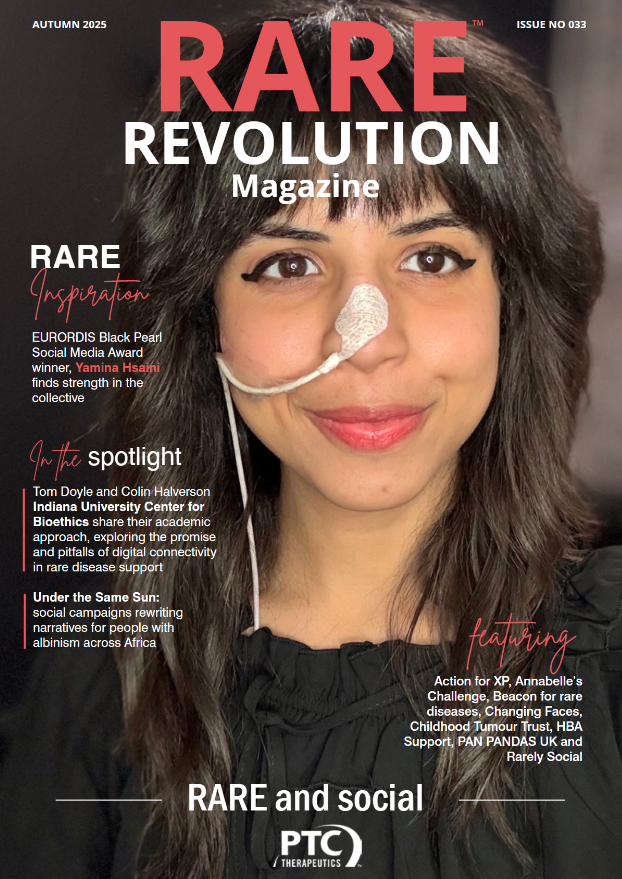A mother’s journey to change the medical landscape for son’s rare disease
7q11.23: The deletion that changed the lives of a family and ignited a journey for change. How a Brooklyn, NY family—shattered by their son’s diagnosis—uses their pain for good to change the future for Williams syndrome.
The mystery that is Williams syndrome
It was a chilly night in October 2011 when the Filippazzo family excitedly rushed to the hospital to welcome their new addition. What was supposed to be one of the happiest moments of their lives went dramatically awry. Within minutes of their son Anthony’s birth, a team of doctors were bedside identifying various medical abnormalities but not knowing their aetiology. Hypoglycaemia, jaundice, need for a blood diffusion and bilateral hearing impairment, to name a few. By eight weeks old Anthony had pneumonia and respiratory synthetic virus. He had severe colic, had extreme difficulty eating and sleeping and exhibited signs of failure to thrive. By 12 weeks old they discovered abnormalities in his heart and deficits in his gross motor skills. By one, he was entirely non-verbal and not meeting milestones. Despite presenting with a myriad of health and developmental problems, it was two years before his parents discovered a geneticist who suspected the cause of his medical problems. With confirmation from microarray genetic testing, the Filippazzo family learned the news. Their son has Williams syndrome.
Williams syndrome (WS) is a rare, complex, multi-system disorder caused by a microdeletion of approximately 29 genes along one arm of chromosome seven. Individuals with WS suffer from a variety of medical complications, including cardiovascular and connective tissue problems that often lead to aortic and pulmonary stenosis.[1] Approximately 30% of individuals with these abnormalities will require a minimum of one surgery in their lifetime to address the stenosis. Surgical procedures of any kind pose an enhanced risk to people with WS due to a higher probability of adverse reactions. One of the most frightening potential reactions is sudden cardiac death, but the reasons for which are not completely understood.[2] Individuals also suffer from growth abnormalities, endocrine problems, hypotonia, neurological and musculoskeletal disorders, renal disease, hypercalcemia and gastrointestinal difficulties. Developmental delay and intellectual disabilities are also a concern[3].
Eventually the family learned that Anthony has stenosis in his aorta and in his pulmonary artery. This prevents the valve from fully opening and reduces blood flow from his heart and lungs. Anthony also has supraventricular tachycardia (unexpected incidents of rapid heartbeat), due to an abnormal electrical sinus rhythm. Because of the dangers of anaesthesia, the family had to manage his tachycardia for a decade with a cocktail of antiarrhythmic medications that, despite taking, still caused breakthrough episodes. These episodes required frequent visits to the emergency room where his heart rate would race upwards of 280 bpm (beats per minute) and need to be reset. Ultimately, Anthony underwent a seven-hour catheter ablation, a surgery complicated by his WS.
Accepting the status quo was simply was not an option
Anthony’s mother, Camille Fortunato, immediately began searching for doctors and researchers to treat Anthony upon receiving his diagnosis. Sadly, at the time, very little was being done by way of research. In 2014, Camille joined the Williams Syndrome Association (WSA), the official non-profit organisation for WS, and began her journey to effectuate change. Her grassroots efforts were aimed at raising awareness at the start, but in 2016, everything changed.
The launch of a new era
Doctors from Boston Children’s Hospital and Columbia University Medical Center were intrigued by the increased risk of sudden cardiac arrest with anaesthesia administration. They presented a research proposal to the WSA, but at the time the budget was insufficient to fund such an endeavour. So in 2017, Camille partnered with other WS families to host the first ever fundraiser of its kind specifically for WS research. For one night, researchers, doctors, families and individuals with WS, gathered together to support a watershed initiative. From that moment on, Camille’s spark was ignited.






God gifted Anthony to our family for a reason
Camille’s commitment to changing the medical landscape for WS was solidified with the funding of the anaesthesia study and the critical data it revealed. The need for more research of this kind and beyond was critical. In 2019, and in partnership with the WSA, the Anthony G Filippazzo (AGF), a fund for medical research and advancement, was born. The mission of the AGF is to pursue research initiatives with the ultimate goal of reducing the effects of this disease and enhancing the overall health, well-being and longevity of individuals living with WS.
“Children with Williams syndrome are dying,” Camille said. “WS has been around for over 60 years and we still do not have the answers we need, it’s just not acceptable.”
Working today for a healthier tomorrow
Throughout the year the AGF hosts a variety of fundraising events that lead up to their ‘A night of love, a celebration of life’ gala. Held in November, this event honours a leader in the WS community with the Love, Juliette award.
“Love, Juliette is an award named in memory of Juliette Baron, a baby from Texas who died of sudden cardiac arrest days before her second birthday, and an award in honour of all WS warriors who have lost their battle to this disease,” Camille said.
With the money they raise from the generosity of so many, the AGF has supported a number of different WS research initiatives. They include research examining fears, phobias and anxiety—a potentially debilitating symptom in WS, and a medical symposium by clinicians for newly diagnosed families through Massachusetts General Hospital. In 2025, the AGF is on track to purchase specialty cardiac research equipment that will be used in conjunction with a principal researcher who is examining cardiac ion channel dysregulation in WS in unprecedented ways.
The years of activism and awareness are creating a stir, so much so that Camille travelled to Albany last year with a big request. With the assistance of Assemblyman Sam Pirozollo and Assemblywoman Jaime Williams, the Legislature signed a resolution declaring the month of May to be Williams syndrome awareness month in the state of New York. “The day was so incredibly meaningful…a culmination of many years of hard work by so many people and a day I will cherish for the rest of my life.”
To learn more about WS, the work they are doing and the beautiful community of people they are helping, visit their Instagram @afresearchgrant or website: https://fundraise.givesmart.com/e/ovRByQ?vid=1ivsqm.
[1] Ewart AK, Morris CA, Atkinson D, et al. Hemizygosity at the elastin locus in a developmental disorder, Williams syndrome. Nat Genet. 1993;5: 11–16.
[2] Mark D. Levin, MD, et al. Heart Rate Variability Analysis May Identify Individuals With Williams-Beuren Syndrome at Risk of Sudden Death. JACC: Clinical Electrophysiology, Vol 9. No. 3, 2023.
[3] Beth A. Kozel, Boaz Barak, Carolyn B. Mervis, Barbara R. Pober et al. Williams Syndrome Nat Rev Dis Primers. 2021 Jun 17; 7(1): 42.


